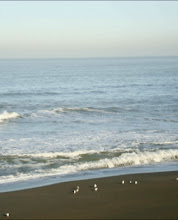That letter was so well written and complimentary that it probably accounted for me making it past the first cut. Just the first cut though. I was out of the running long before Christa McAuliffe was named astronaut teacher.
I was lucky as it turned out. I've enjoyed being alive all this time. On January 28, 1986 the Challenger exploded. All aboard died. The Space Shuttle program, too, was killed.
In a way, I have another chance to participate in the USA space program. (I think I can force through a metaphor or something here.)
Tomorrow is the 40th anniversary of Apollo 11 landing on the moon and the famous Neil Armstrong quote: "one small step for man; one giant step for mankind". Tomorrow I'm going to have the first of 3 joint replacements to make me walk well. It will be a bit of an ordeal and entirely insignificant for mankind, but really quite a giant step forward for me.
Of course I'm not looking forward to it. That would be crazy. Oddly though, I am looking forward to the opportunity to test my capacity for courage and grace in difficult circumstances. It's kind of like being an astronaut.
I remember well that Apollo 11 moon landing - July 20, 1969. My only child was almost 4 years old. We let him stay up late to see this momentous event, live, on TV. We tried to explain so he would understand the enormity of the event. When he grasped what we were saying, Greg was incredulous. "Wait a minute," he said. "Do you mean that no one has ever walked on the moon before this?"
The science fiction theme impinged on reality in our family at other times too. A decade later Jimmy Carter was campaigning for a second term against Ronald Reagan. My second son, Mike, was 9 years old. Mike was sure we were fooling him about the challenger's name. He just couldn't believe it. That's because Michael didn't hear 'Ronald Reagan'. He heard 'Ronald Ray-Gun'.
Michael misheard more than once. For years he thought our friend, Dan Thrope, had an infinitely better name: Dan Throw-up. Mr. Throw-Up.
Years passed. More astronauts walked on the moon. The Space Shuttle program was revived. The country took a stand against "The Evil Empire", but also prospered economically, under the stewardship of President Ray-Gun.
And tomorrow I celebrate the bravery and vision of the Apollo 11 astronauts in more ways than one.

